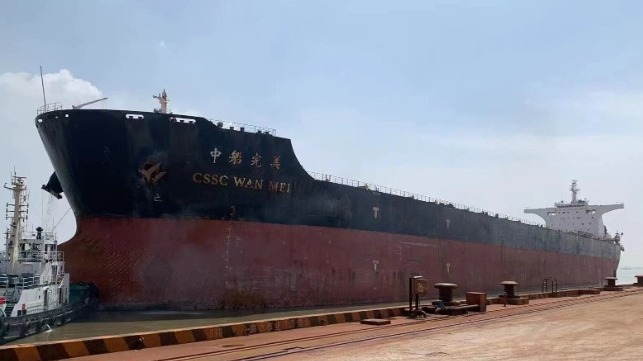BV and HK-Based Ship Owner Wah Kwong Studying Carbon Capture at Sea

Carbon capture aboard ships continues to draw attention with French class society Bureau Veritas reporting it is working with one of Hong Kong’s largest shipowners, Wah Kwong, and Shanghai Qiyao Environmental Technology Co., a subsidiary of Shanghai Marine Diesel Engine Research Institute, to study the feasibility of the technology. Once thought possibly best suited to shore-based large industrial locations, carbon capture is drawing increasing attention as a tool to meet the emerging carbon intensity rules for existing ships.
Carbon capture technology has been used in the land-based industry for many years. According to BV, it is considered a mature technology. The International Energy Agency (IEA) reports in 2021 a total of 40 million tonnes of CO2 was captured and stored at on shore locations with the number expected to grow dramatically in the coming years. However, as a marine application, there are challenges including safety, layout, and energy consumption that must be addressed. There are also the challenges of balancing the effectiveness with the cost to operate the systems and the requirements to move the CO2 from temporary storage on the ships either to permanent storage or applications for reuse.
Qiyao Environmental Technology reports that it has developed a technology for CCS that has completed laboratory testing, achieving a total carbon capture rate of over 85 percent. They are continuing to work to optimize the results while also reporting that the CCS unit can be designed for different ship types and sizes.
The CCS system mainly consists of an absorption unit, a separation unit, a compression unit, a refrigeration unit, and a storage unit. The main principle is that the organic amine compound solution reacts with the CO2 in the absorption unit, separating it from the rest of the exhaust gas. The dissolved carbon dioxide compound solution is desorbed at high temperature in the separation tower before the extracted carbon dioxide is compressed, purified, and cooled into liquid carbon dioxide and stored in a low-temperature storage tank.
The study will focus on two types of bulk carriers in operation in the Wah Kwong fleet. Based on the specific design parameters of the vessels, Qiyao Environmental Technology has developed a customized design of CCS units for Wah Kwong and submitted relevant drawings. Subsequent research work will be conducted for oil tankers.
BV reviewed the plans according to existing regulations and rules to ensure the safety of the vessels and equipment, and that the carbon emission reduction targets are effectively achieved during the operation of the vessels. The design approval of the CCS unit is under review.
Last year, Japan’s “K” Line working with Mitsubishi reported the first successful capture and storage of CO2 aboard one of its vessels using a demonstration unit. They are continuing to explore the use of the system while multiple research projects are also underway in Asia and Europe. A study conducted last year focusing tankers found tankers found that the technology is costly to implement but feasible. One of the approaches that companies have been exploring is adapting the current exhaust scrubbers to add the capability to remove and store CO2.
With the pending launch of the IMO’s CII rankings, the challenge is growing for ship owners and operators to find a technology that makes in-service ships viable. The goal is to develop a technology that can meet the IMO’s 2030 CII targets.
